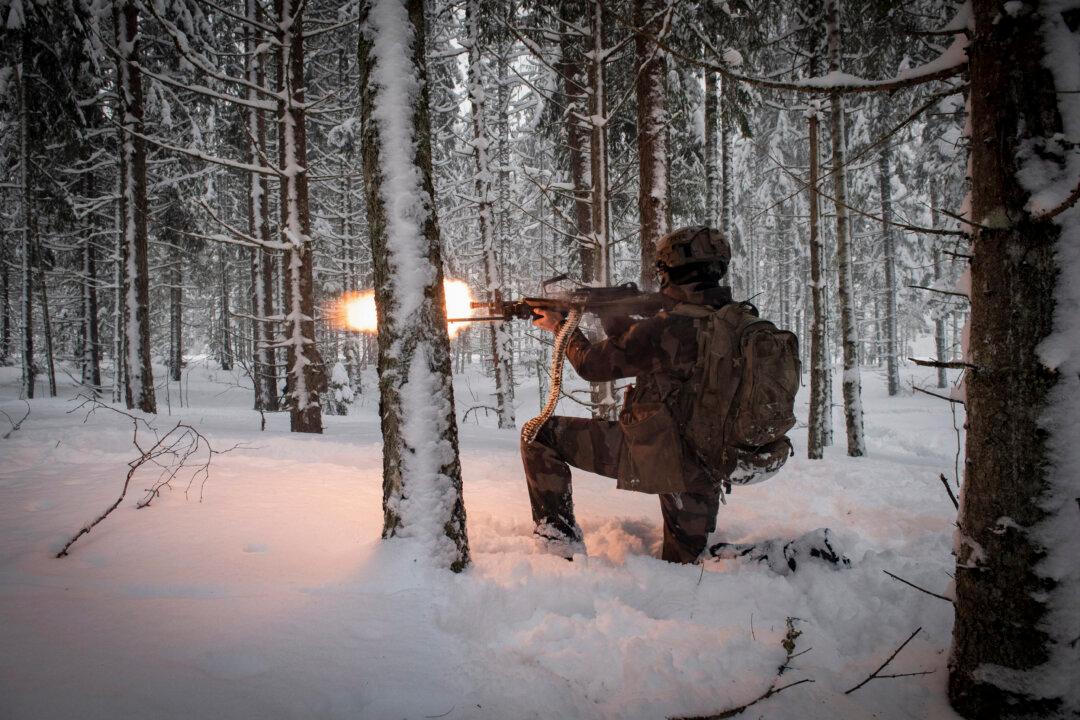The President of the European Commission, Ursula von der Leyen, has approved the relaxation of fiscal rules to allow European Union countries to spend more on defense.
“Let there be no room for any doubt, I believe when it comes to European security, Europe has to do more, Europe must bring more to the table, and to achieve this, we need a surge in European defense spending,” Von der Leyen said in a speech at the Munich Security Conference on Friday.
However, they have come across bureaucratic and institutional obstacles, as well as skeptical investors who see better profits and less risk in other industries.
Von der Leyen said European Union nations were spending on average around 2 percent of their GDP but she said they needed to increase it to above 3 percent.
That would still be well below the 5 percent President Donald Trump has urged NATO countries to spend.
She said Europe was in conflict with “rogue” Russia over Ukraine and said a “bold approach” was needed.
“This is why I can announce that I will propose to activate the escape clause for defense investments,” she said. “This will allow member states to substantially increase their defense expenditure.”
The change would allow EU governments to increase their defense spending without violating the 27-member bloc’s strict budget rules which do not allow excessive borrowing.
Von der Leyen’s announcement was based on a paper prepared by Poland, which holds the rotating EU presidency. The paper stated the current interpretation of defense investment as only military equipment like tanks or planes was too narrow.
Von der Leyen made the announcement just two days after U.S. Defense Secretary Pete Hegseth told Ukraine’s backers in Europe it was “unrealistic” for Kyiv to become a member of NATO, or to return to its pre-2014 borders.
On Friday, Von der Leyen also said: “Many in the security circles in Europe were confused, some even worried by the comments made by senior U.S. officials earlier this week.”
“But we need to be honest here, avoid outrage and outcry, because if we listen to the substance of the remarks, we not only understand where they are coming from, but recognize there are some remarks we can agree on, because yes, both the United States and the European Union want an end to the bloodshed,” she said.
“We must also develop a fully integrated European defense, industrial, and technological base. This goes far beyond a simple debate about spending figures,” Macron said.
“If all we do is become even bigger clients of the United States, then in 20 years, we still won’t have solved the question of European sovereignty.”
He also urged European countries to buy the Franco-Italian SAMP-T air defense system, which he said was better than the U.S. Patriot missile system.
EU Army Plan Resurrected?
Tim Ripley, a defense analyst and author of “Little Green Men: The Inside Story of Russia’s New Military Power,” told The Epoch Times that Merkel’s idea of a European Union army could be resurrected in the light of Trump’s Ukraine proposals.“It might be back because if that peacekeeping force in Ukraine can’t be NATO, the obvious vehicle would be a European Union-mandated force,” he said.
He said Trump and Hegseth were effectively telling Europe, “If you want to go and protect Ukraine, that’s your problem.”
“If the European taxpayers want to stump up more money for defense, obviously they get a return in security and feeling secure, but also it’s the natural inclination for that money to keep European workers in jobs, rather workers in Florida and Texas,” Ripley said.
On Jan. 31, a letter signed by France, Germany, and 17 other EU countries, called on the European Investment Bank (EIB) to relax the rules on lending to the defense industry.
The EIB is jointly owned by the 27 EU member states’ governments and is currently forbidden from financing the production of ammunition, weapons, or military equipment.
Increasing Capacity and Stockpile
Ripley said there was an argument for increasing the rate of production of existing planes, drones, and missiles, rather than spending money on researching and developing new types of weapons and equipment.“You increase the number of production runs, you increase the number of shells you buy, you increase the number of missiles,” he said.
“So you increase your capacity and increase your stockpile, which actually means you have more stuff to fight with, rather than spending it all on exotic research and development, and investing in a plane that might not be delivered for 15 years,” Ripley said.
He said in Europe there was a history of low return on investment, for investors, in the defense industry.
“First of all, because they didn’t build many pieces of hardware, so you had a finite production. There wasn’t an ability to make more and sell them for export, to make more profit. You were never going to get runaway profits,” he said.
Ripley said an example would be the Eurofighter Typhoon fighter jet—which is built by Airbus, BAE Systems, and Leonardo in Britain, Germany, Spain, and Italy—which he described as a “monopoly” with restricted profit margins.
“Only one company in each country gets the contract to build them, and they’re only allowed to make a 5 percent profit. So their profits are capped, it’s a monopoly situation,” he said.
‘Undeniable Reputation Risks’ for Investors
NATO Secretary General Mark Rutte told a meeting at the World Economic Forum in Davos on Jan. 22, that environmental, social, and governance (ESG) guidelines were damaging the West’s ability to invest in defense.Many pension funds, corporations, and other big investors are choosing where to invest based on these ESG guidelines.
This often leaves the defense industry out in the cold, which Rutte is trying to overcome by encouraging people to support and speak positively about defense spending.
“Defense is not in the same category as illicit drugs and pornography. Investing in defense is an investment in our security. It’s a must!”

He said the defense industry brought with it, “undeniable reputation risks” for investors.
“Although ‘indirectly’ financing the defense industry by purchasing government bonds [for example] does not seem to pose a problem, some investors would rather avoid the sector entirely just to keep things safe and simple when it comes to their image or convictions,” Laforcade wrote.







